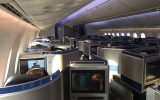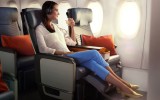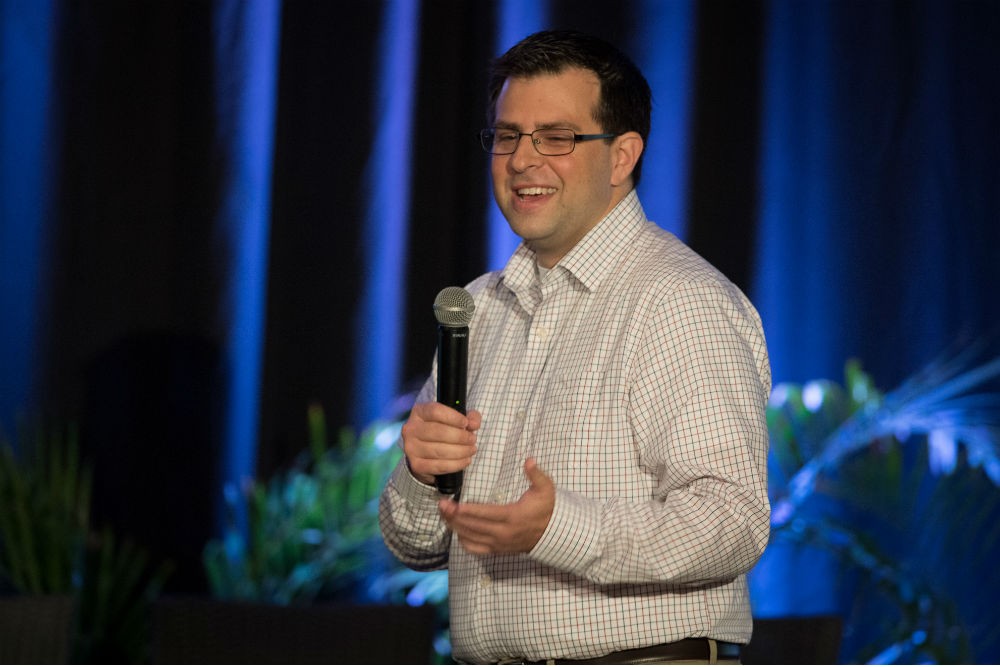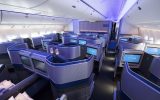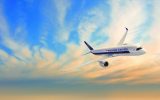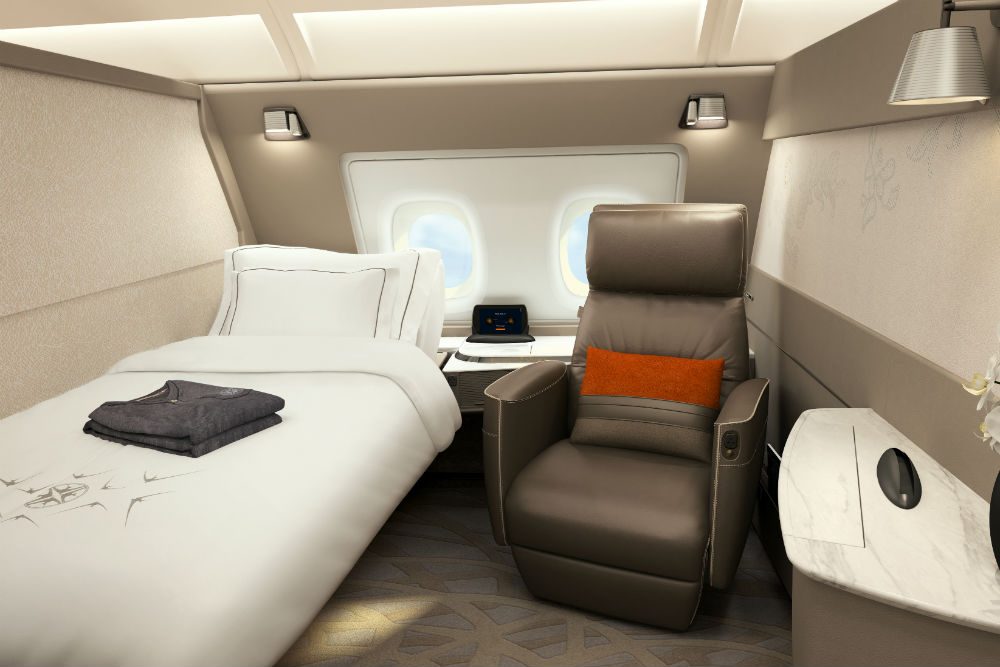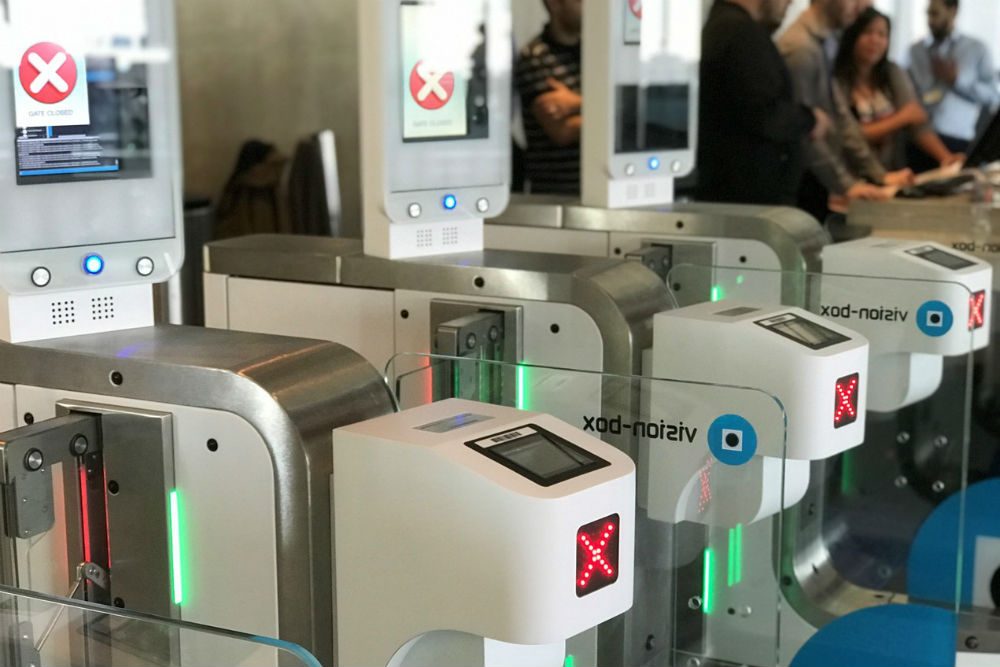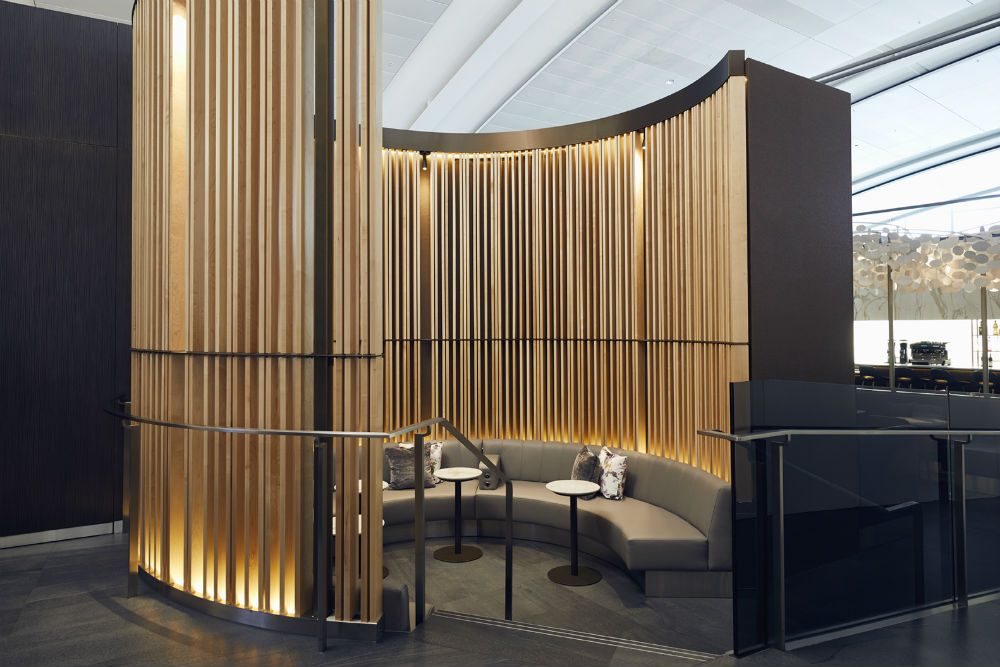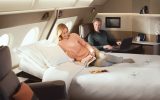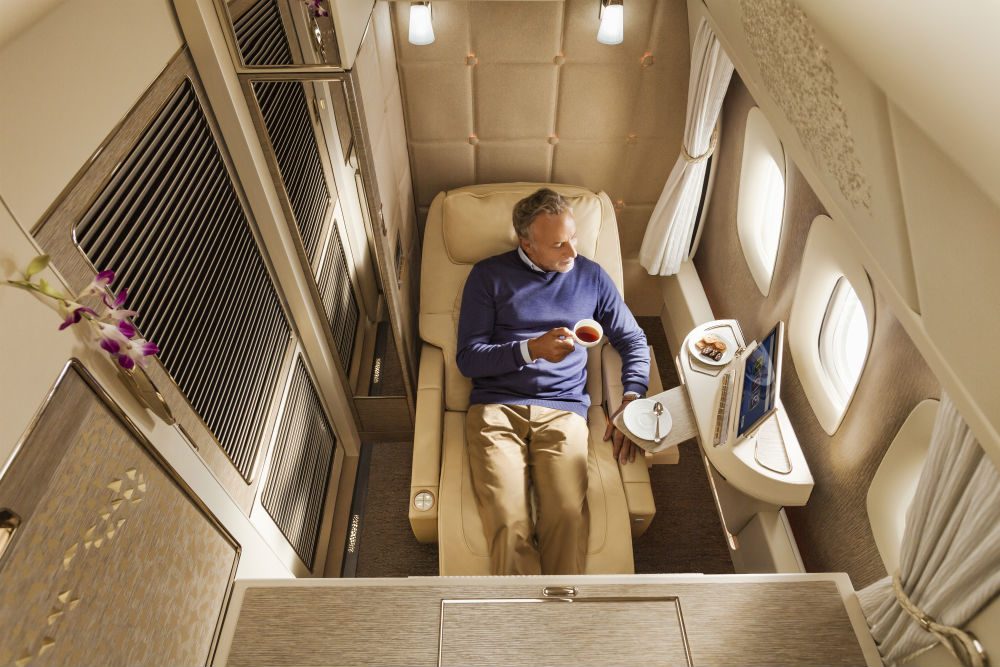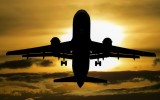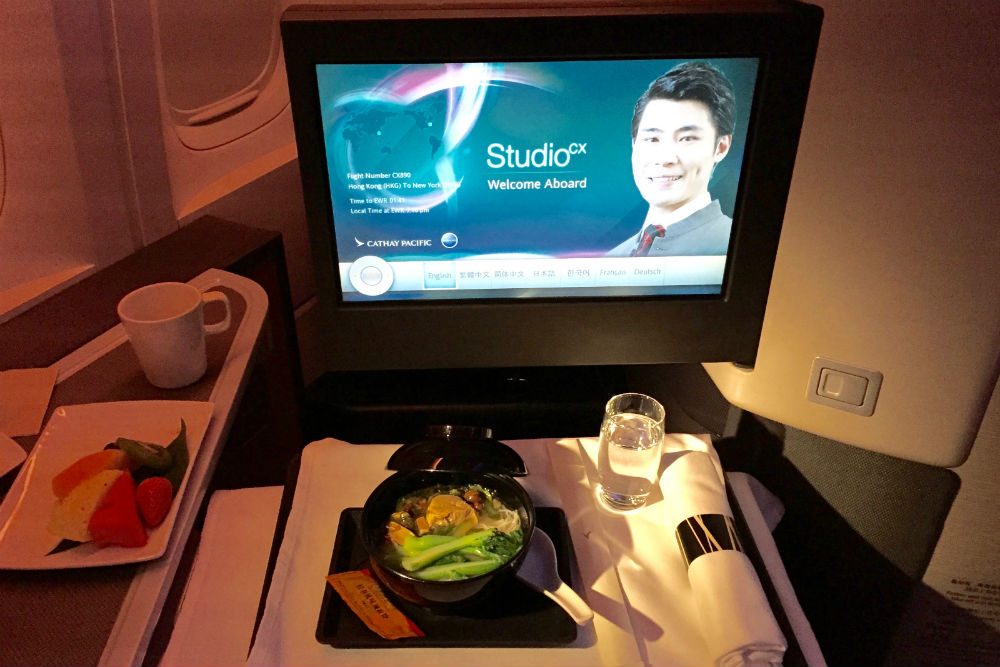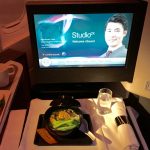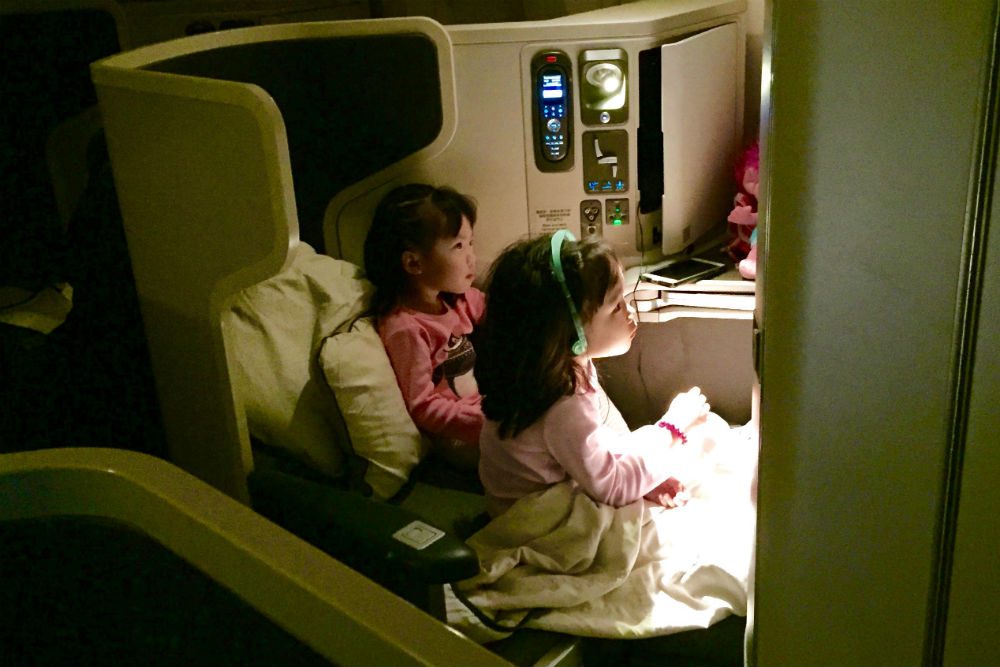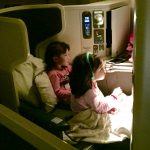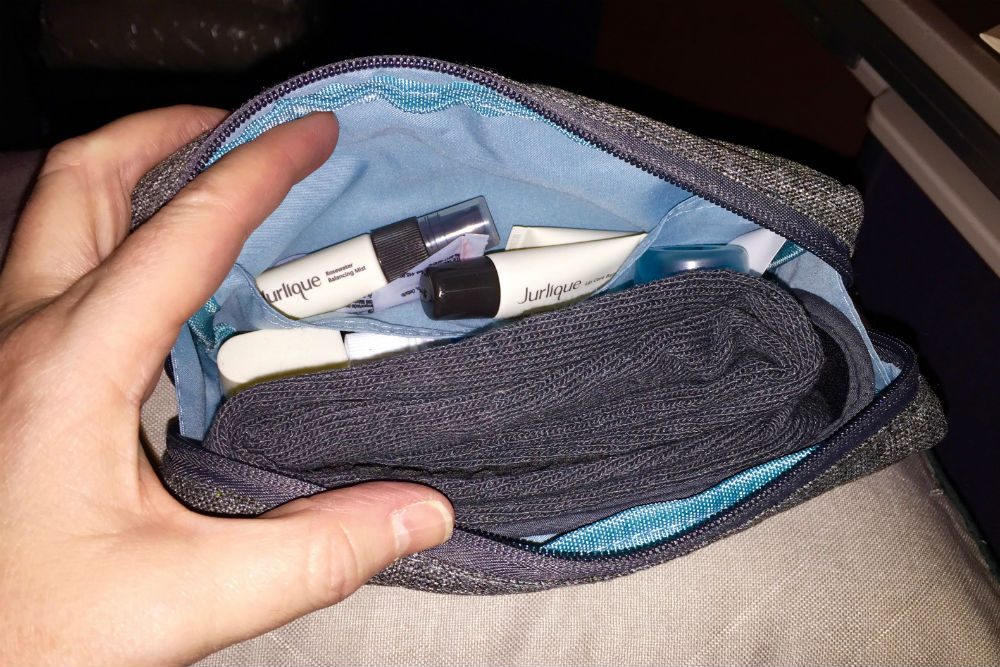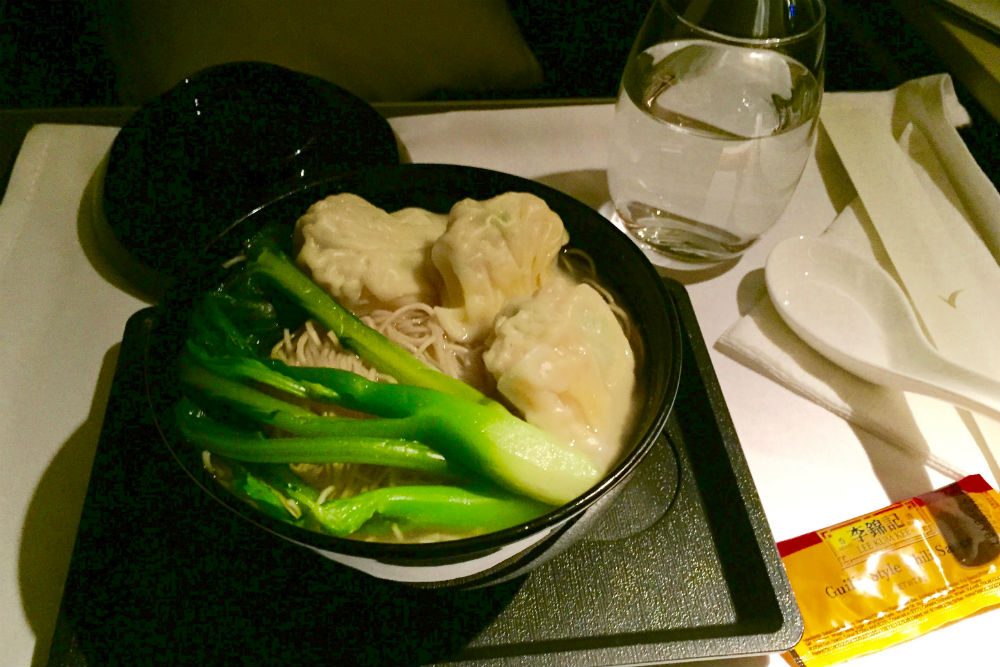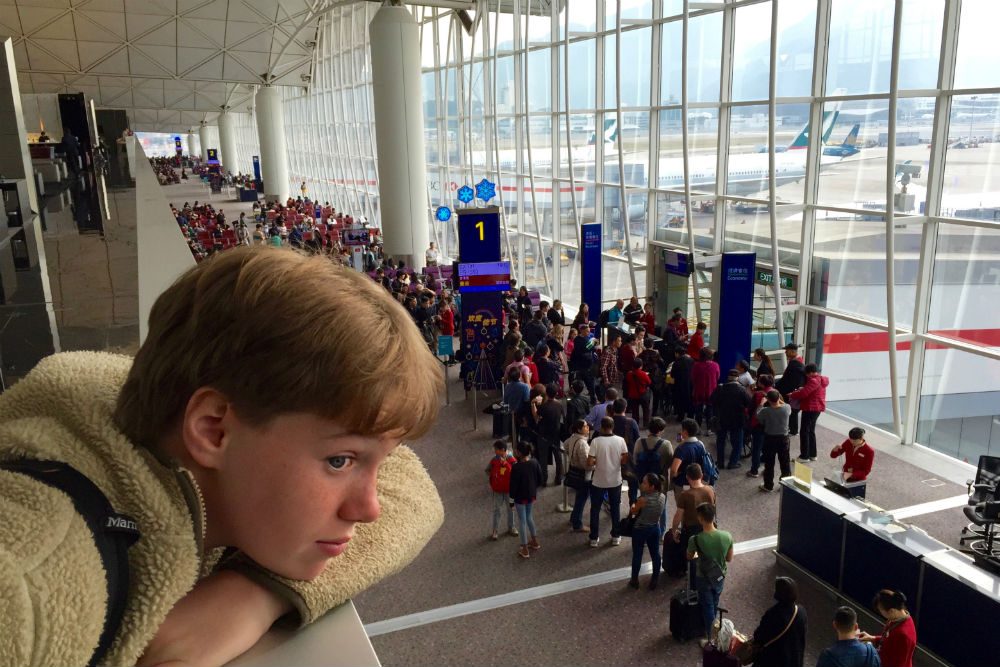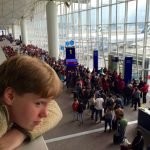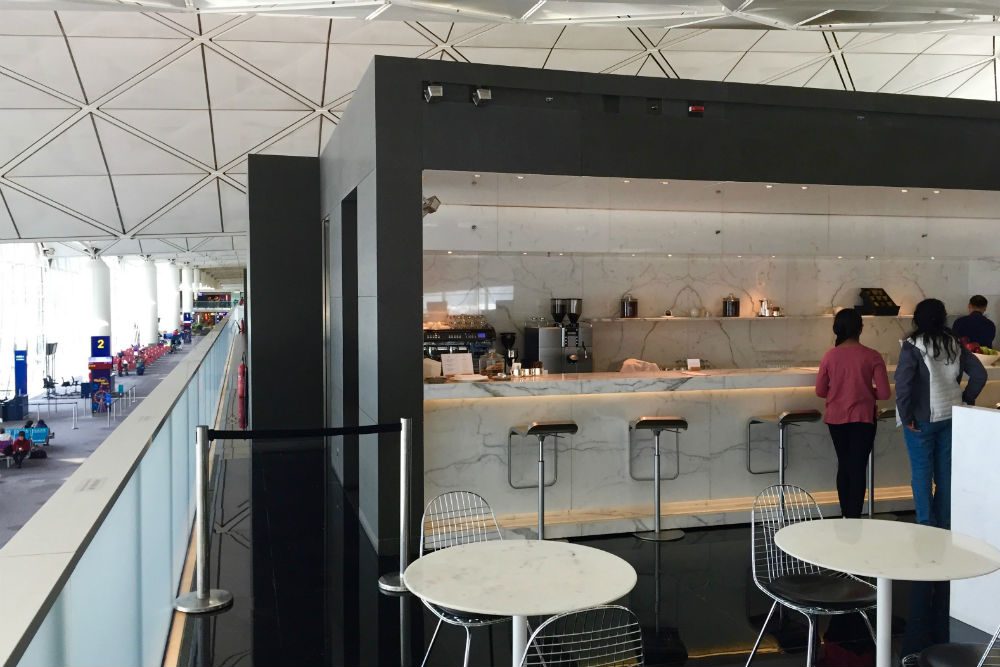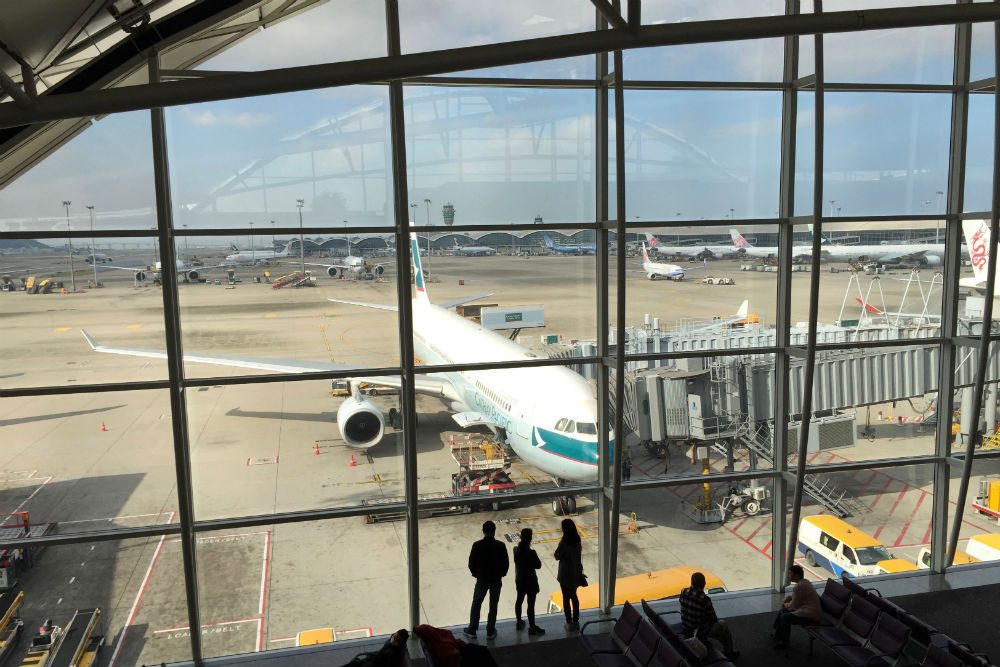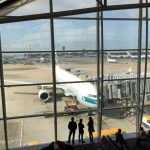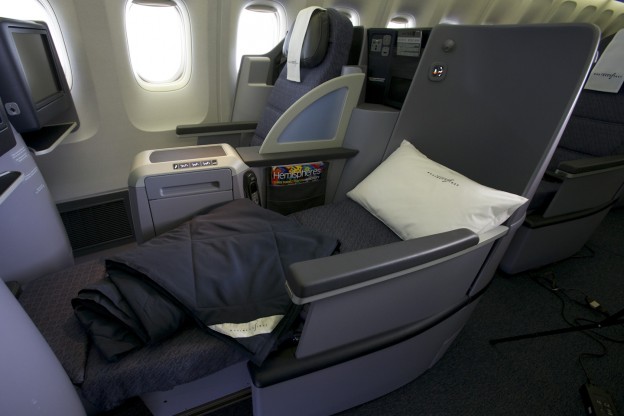UPDATE ON JULY 19: It’s been 14 days since Tim and the kids returned from California, nobody got sick, and both kids tested negative for Covid-19. (Tim was not tested.) This update does not represent a recommendation that people fly; I am simply reporting the outcome of my family’s decisions, as described below.
As you know from Steps to Reduce Your Health Risk When You Fly, the problem with flying nowadays is likely not the air on the plane; scientists say the HEPA filtration system generates hospital-quality air. The problem is the close quarters and the unpredictable behavior of other passengers. While it may be impossible to know with certainty how empty or full a flight will be or whether there might be passengers who refuse to wear masks (note: major U.S. airlines require passengers to wear masks), it is certainly possible—if you need to make an essential airline trip (remember, the CDC advises against non-essential travel)— to choose an aircraft layout and seat location so as to mitigate your risk.
That was my goal when I had to book a transcontinental flight for my husband and two sons. They flew from Newark to San Francisco on United Airlines on June 25. Based on their experience, here’s my advice for picking planes and seats so as to lessen your risk:
Know which airlines will keep seats empty during your flight.
Back in April when I booked the flight and chose the seats I wanted, United was blocking certain seats to try to maintain some space between passengers. But I knew I could not count on those seats remaining empty. United offered no guarantee that it wouldn’t fill every seat if it could. And, in fact, United is now no longer blocking seats; this week, the airline’s communications chief, Josh Earnest, said that blocking middle seats is just a PR strategy and not a safety strategy, since it still doesn’t keep passengers six feet apart.
By contrast, Alaska Airlines, Delta, Jetblue, and Southwest promise to keep certain seats blocked through at least the end of July: Alaska says it will block middle seats and cap flights at 65% capacity through July 31. Delta says it will block all middle seats, and some aisle seats in aircraft with 2×2 seating configurations, through September 30. Jetblue is blocking seats through July 31: middle seats on big planes, aisle seats on small ones. Southwest says it will block middle seats through September 30.
American and United are booking their flights to capacity when possible. United says it will alert passengers beforehand if their flight is “expected to be fairly full.” If you want to change your flight, the airline will let you do so for no fee; if you want to cancel, the airline will give you a credit toward a future flight in the amount that you paid. (See the “Prioritizing Your Well-being” section here.) I recommend calling the airline ahead of time to check how full your flight really is (as opposed to waiting for the airline to alert you).
If you’re going to splurge on a business-class seat, pick an aircraft model where that will make a big difference.
I wanted a nonstop flight (to reduce time in airports), which limited my options to Alaska, Jetblue, and United. On United.com, as I pulled up flights during the search process, I compared every plane on offer between Newark and San Francisco by clicking to find out the aircraft model and view the seat map. My goal was to put as much physical distance as possible between my family and other passengers, and if there was ever a time when I was willing to pay more for that, this was it, so I checked out all the business-class options too. I saw that United was flying a 787-10 Dreamliner with the Polaris business-class cabin. The seat design means that you get something akin to your own cubicle onboard. Here’s a 3-D, 360-degree view of the cabin, so you can see how each passenger is partially shielded and how there are many solitary window seats with no aisle seat next to them. (If you hold your cursor down on the 3-D view and scroll in a circular fashion, you can “tour” the cabin.) And the seats were surprisingly affordable (this was back in April, when the coronavirus outbreak was peaking in New Jersey).
It was the combination of the seat design, the cabin spaciousness, the newness of the plane, my elite status with United, and the price—plus the fact that if I needed to change the flights, United would have the most other flights to choose from—that made this option the best for my family’s needs. (If you’re comparing flights and can’t easily determine the aircraft model, seating configuration, and other seat details via the website you’re using, you can do your seat research on Seatguru.)
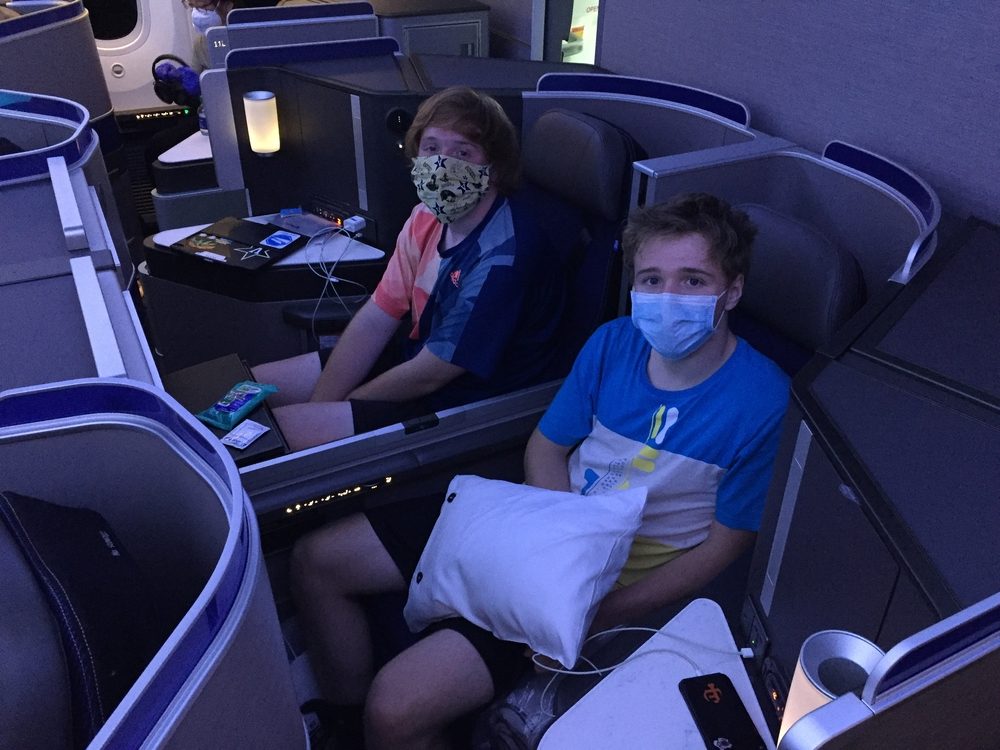
My kids had seats with protective barriers.
When choosing your seat location, consider all the factors that might protect you from other people’s movements.
After studying the layout of the seats in the business-class cabin, I assigned my family seats in the last row. Here’s why I wanted the last row:
- Since the business-class lavatory is at the front of the cabin, there would be no foot traffic past them to/from the lavatory.
- The other passengers in the cabin would be seated in front of them, facing forward, so if any of those passengers were to cough or sneeze, they would hopefully do so in the opposite direction from Tim and the kids.
- The aircraft door is immediately behind that row. This increased the probability that my family could board the plane last and not have to walk past already-seated passengers. (Boarding the plane last meant they could avoid standing in line at the gate.) They would also probably be able to disembark first.
Tim reports that we made all the right decisions and that the flight felt very safe, as did the entire airport experience. Newark airport was empty. In the TSA line, nobody touched anything. At each gate was a gallon jug of hand sanitizer. When they boarded the plane, they were given wipes so they could wipe down their seat area. Every passenger Tim saw onboard wore a mask. Every airport staffer and traveler he saw at EWR and SFO wore masks, although a few passengers at SFO had their masks at their chins as they spoke on their mobile phones.
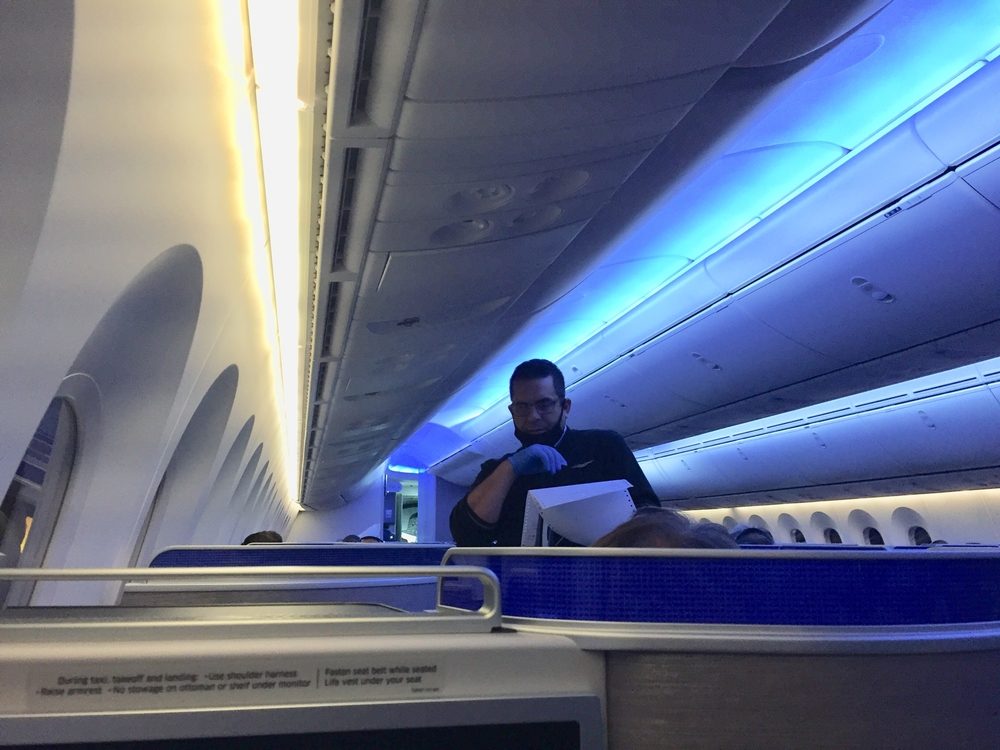
The purser was the only person Tim saw onboard whose mask was not covering his nose and mouth.
Tim reports that there were only two exceptions to his sense of safety on the flight: (1) The United Airlines purser wore his mask at his chin instead of over his mouth and nose. (2) At the end of the flight, passengers were in a rush to get off the plane and kept only about two feet of distance from one another when emerging from their seats and moving from the plane to the jetway.
Based on my family’s flight experience, we have a few more tips to share:
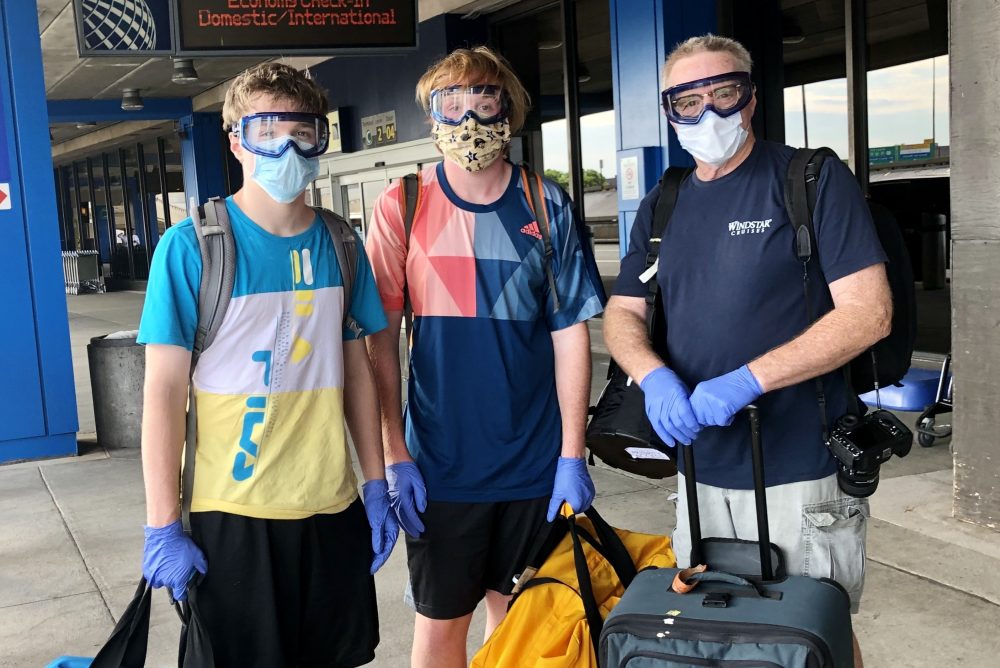
When I dropped Tim and the kids off at Newark airport, they wore goggles, but they’ll be trying out face shields on the return flight.
- Consider wearing a face shield (in addition to a mask). It can protect your eyes or at least prevent you from touching your eyes with unwashed hands. When I dropped Tim and the kids off at the airport, they wore goggles recommended to us by a friend who is an E.R. doctor. The goggles fogged up, though, so I’ve shipped face shields to the boys for the return flight.
- Use the lavatory earlier rather than later. As you know from Steps to Reduce Your Health Risk When You Fly, the lavatory is cleaner earlier in the flight. My family’s goal was not to use the lavatory at all. And they succeeded! They used the airport restroom immediately before boarding and immediately after disembarking. (And they report that everything in the airport male restrooms was touchless.) During the flight, they never left their pods; they stayed nestled down behind their privacy barriers.
- Bring a sweater. They turned their air nozzles on for purified air throughout the flight, but those nozzles blast cold air, so it got chilly.
- Bring food. Newark airport was empty, with restaurants and almost everything else closed except for one convenience store on each pier. Tim and the kids brought deli sandwiches from home, in case the food service on the flight didn’t happen or didn’t appear to be safe. As it turned out, everything served to them—including silverware—came wrapped in plastic.

